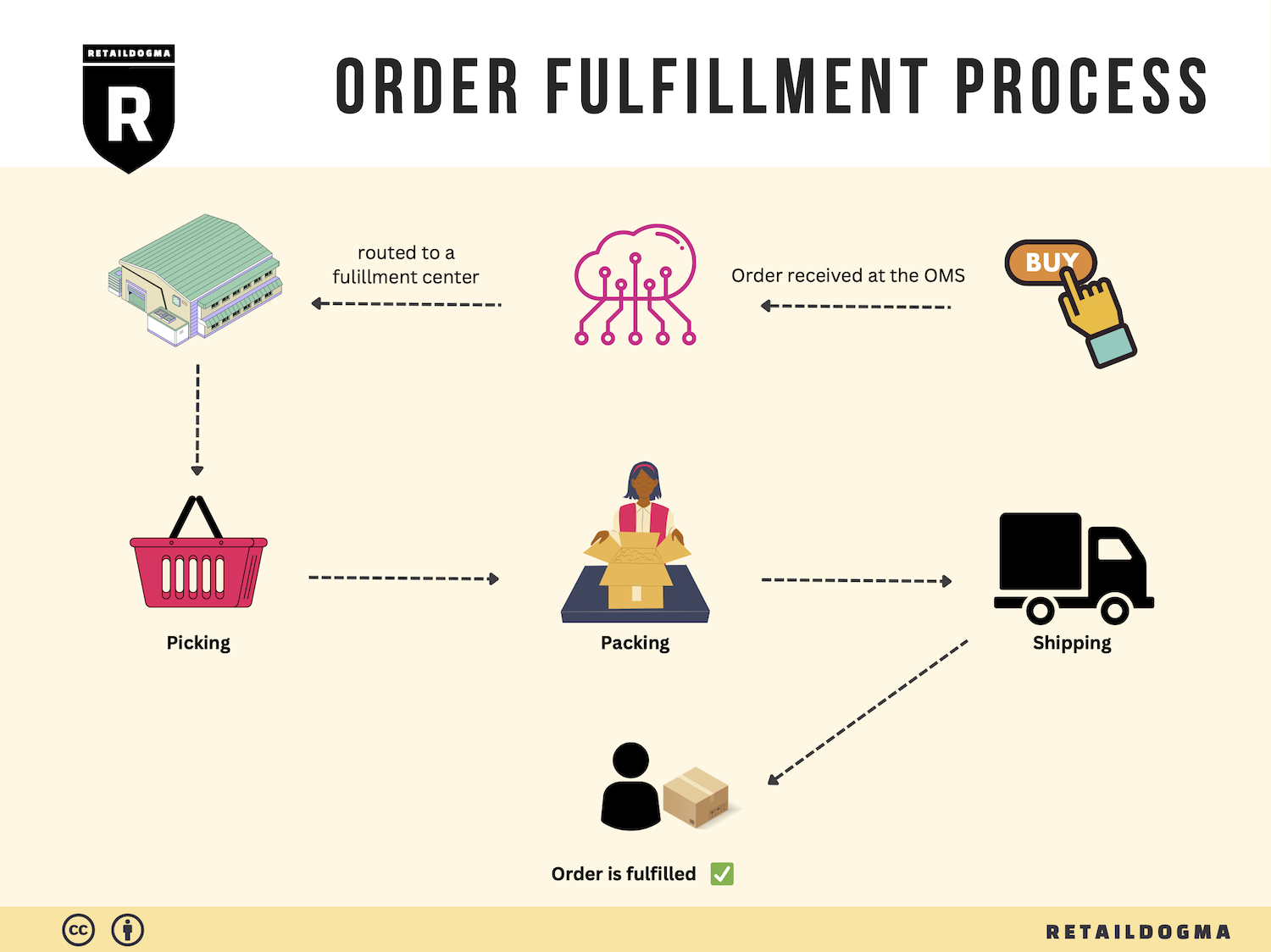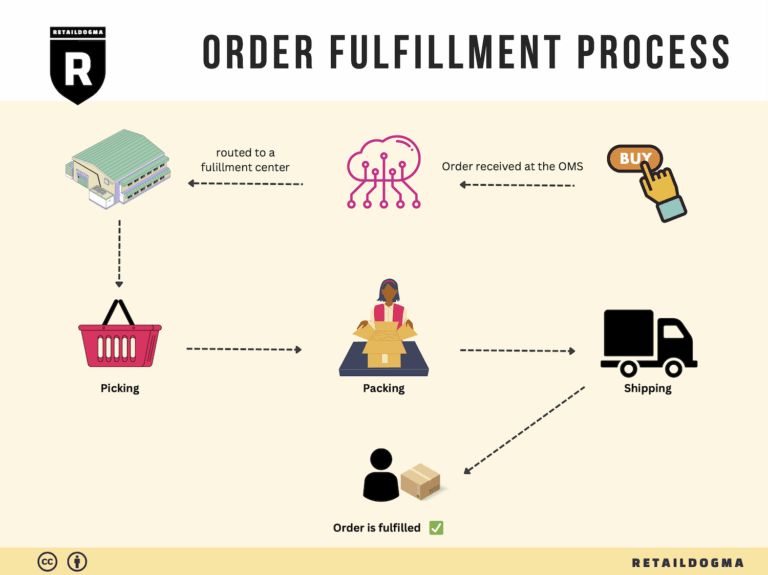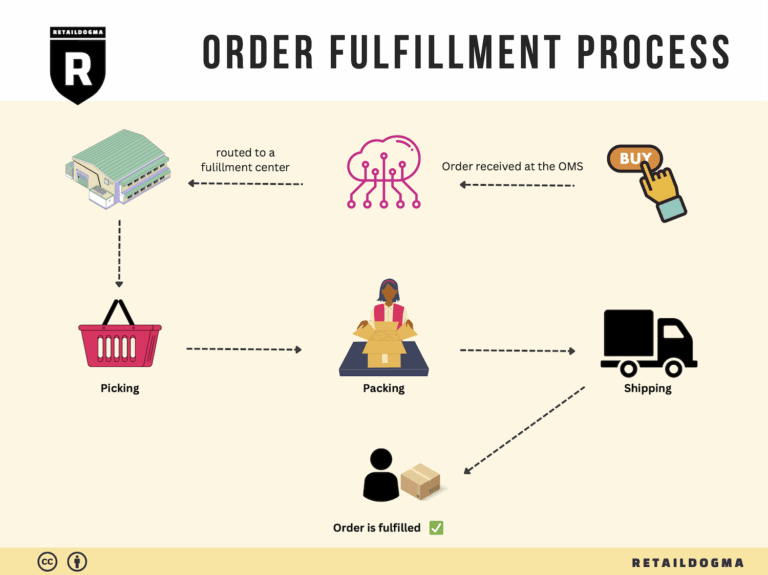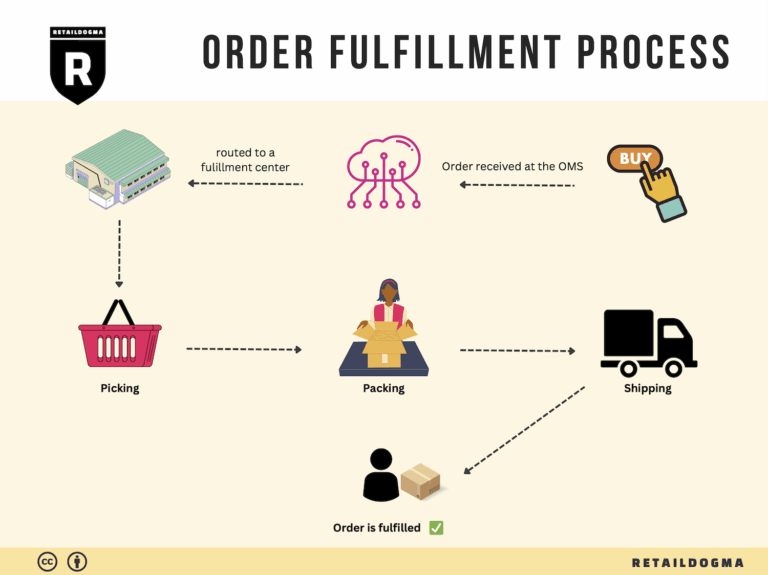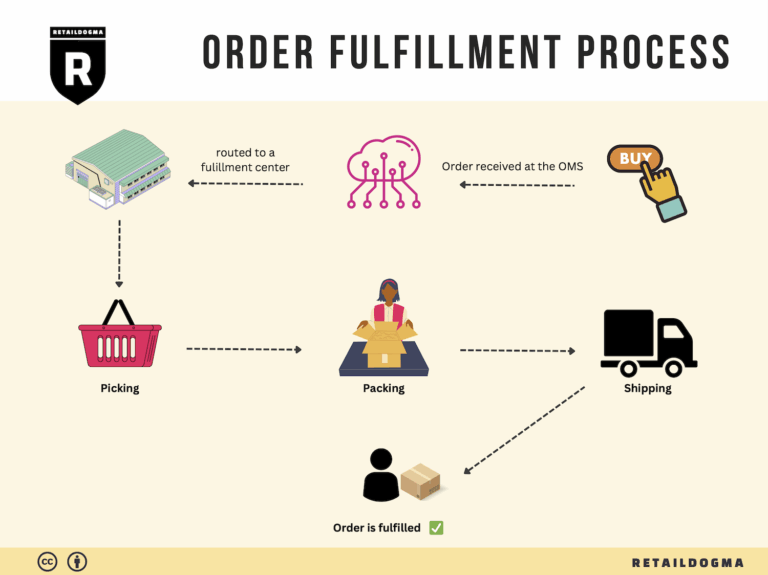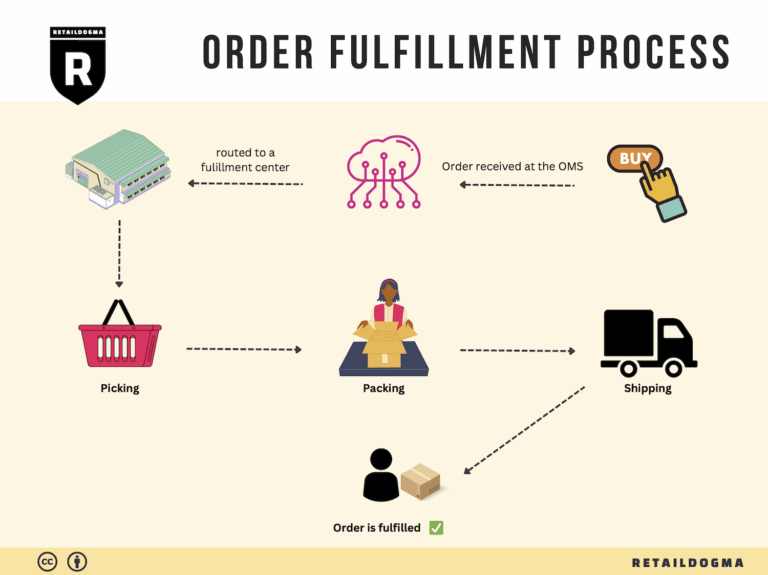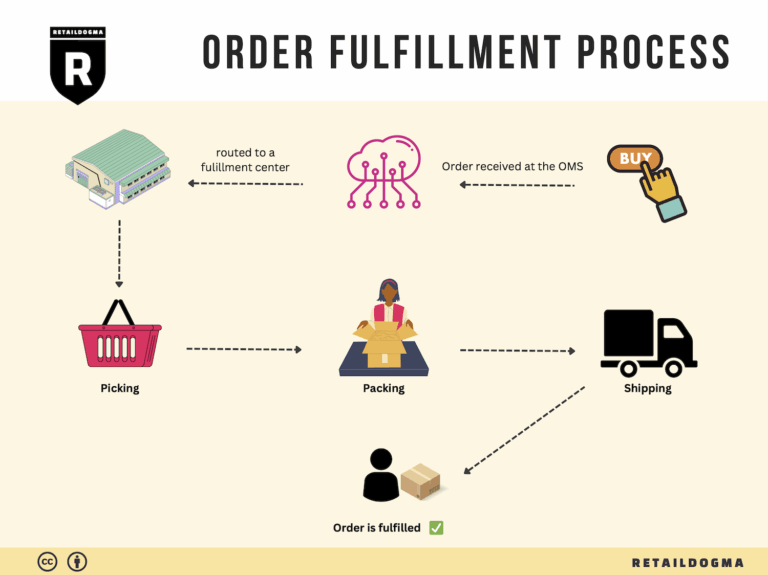What Is A Fulfillment Center? A Complete Guide (2025)
What is E-commerce Fulfillment? An Introduction for Growing Businesses
Navigating the Challenges of E-commerce Fulfillment
As your e-commerce business begins to thrive, you may find yourself grappling with one of the most daunting challenges: the packing and shipping of orders. The excitement of increased sales can quickly turn into a logistical nightmare if you are not prepared. Managing inventory, ensuring timely delivery, and maintaining customer satisfaction are critical components that can overwhelm even the most organized business owner. This is where e-commerce fulfillment comes into play.
At its core, fulfillment is the process of getting a product from your warehouse to your customer’s doorstep. It encompasses everything from receiving inventory and storing products to picking, packing, and shipping orders. For growing businesses, understanding the intricacies of fulfillment can be a game changer, allowing you to streamline operations and focus on scaling your sales.
In this guide, we will explore various fulfillment models that can cater to your business needs. This includes Third-Party Logistics (3PL) providers, who can handle the entire fulfillment process for you, and Fulfillment by Amazon (FBA), which leverages Amazon’s vast distribution network to deliver your products. Each model has its own set of benefits and considerations, and we’ll help you determine which is best suited for your business.
Additionally, we will delve into the core services that fulfillment partners offer, such as inventory management, order processing, and returns handling. These services are essential for maintaining efficiency and ensuring that your customers receive their orders accurately and on time.
Choosing the right fulfillment partner is crucial for your success. We will outline key factors to consider, such as location, scalability, technology integration, and customer support. Understanding these elements will empower you to make informed decisions that align with your business goals.
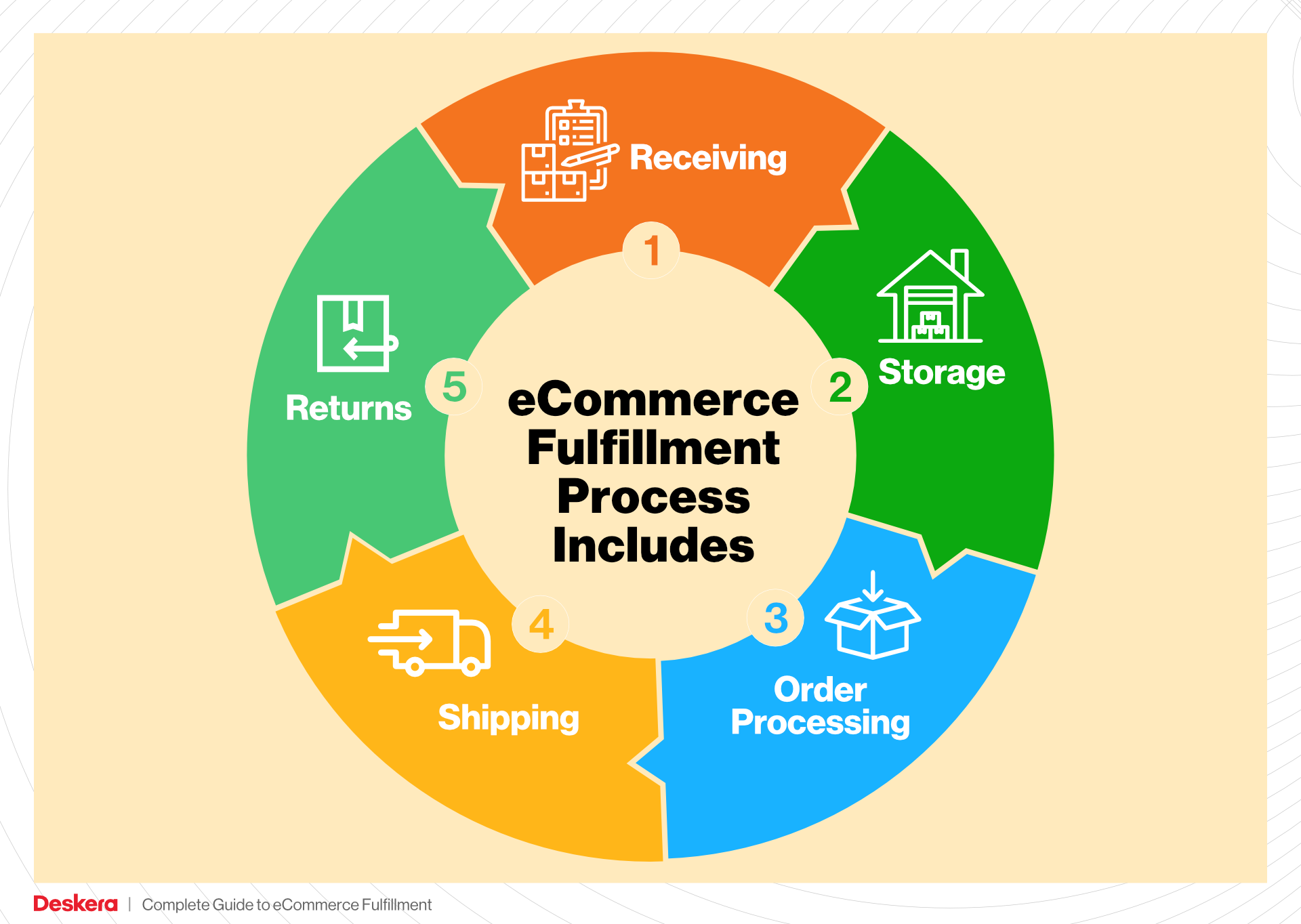
Finally, we will discuss pricing structures associated with various fulfillment services, helping you to budget effectively and understand the financial implications of your choices.
The goal of this guide is to empower you with the knowledge to make smart decisions about your logistics strategy. By understanding the fundamentals of e-commerce fulfillment, you can alleviate the pressure of packing and shipping, allowing you to focus on what you do best—growing your business.
What You’ll Learn In This Guide
- What is E-commerce Fulfillment? An Introduction for Growing Businesses
- The Order Fulfillment Process: From ‘Buy’ Button to Customer’s Door
- Comparing Fulfillment Models: In-House vs. 3PL vs. Dropshipping
- A Deep Dive into Amazon FBA: Pros, Cons, and Who It’s For
- Core Services Offered by Fulfillment Centers
- How to Choose a Fulfillment Partner: A 6-Point Checklist
- Understanding Fulfillment Pricing: A Breakdown of Common Fees
- Frequently Asked Questions (FAQs) about Fulfillment
- Conclusion: Is Outsourcing Fulfillment the Right Move for Your Business?
- Important Disclaimer
The Order Fulfillment Process: From ‘Buy’ Button to Customer’s Door
1. Receiving Inventory
The first step in the order fulfillment process is receiving inventory. This is where products arrive at the fulfillment center, such as Amazon’s LAS7 facility in Las Vegas. Upon arrival, shipments are checked against purchase orders to ensure accuracy in quantity and condition. This step is crucial for maintaining accurate stock levels and preventing inventory discrepancies.
Key terms associated with this phase include SKU (Stock Keeping Unit), which is a unique identifier for each product. By utilizing SKUs, businesses can streamline the tracking and management of inventory. Efficient receiving processes can significantly reduce errors and delays later in the fulfillment cycle, establishing a solid foundation for all subsequent steps.
2. Warehouse Storage
Once inventory has been received and verified, it is stored in the warehouse. This step involves organizing products in a way that maximizes space and facilitates easy access. Effective warehouse storage is vital for ensuring that products can be retrieved quickly when orders are placed.
Key terms related to this phase include ABC Analysis, a method used to categorize inventory based on importance and turnover rates. By prioritizing high-demand items (A items) for easier access and storing slower-moving items (C items) in less accessible areas, businesses can enhance operational efficiency. Proper storage not only optimizes space utilization but also reduces the time spent locating products during order picking.
3. Order Picking
Order picking is the process of retrieving products from storage to fulfill customer orders. When a customer clicks the ‘buy’ button, a pick list is generated, detailing the items and their locations within the warehouse. This step is critical as it directly impacts order accuracy and customer satisfaction.

Key terms associated with this phase include Pick Lists and Batch Picking. Pick lists provide detailed information about which items to retrieve and their respective locations, while batch picking allows workers to fulfill multiple orders simultaneously, enhancing efficiency. Implementing advanced picking technologies, such as voice picking or automated systems, can further streamline this process, reduce labor costs, and minimize errors.
4. Order Packing
After items have been picked, they are brought to the packing station. Here, products are carefully packed to ensure they arrive at the customer’s door in perfect condition. This step is essential for protecting items during transit and for presenting a professional image to customers.
Key terms relevant to this stage include Packing Slip and Void Fill. A packing slip is a document that accompanies the shipment, detailing the contents and confirming that the order has been correctly fulfilled. Void fill, such as packing peanuts or bubble wrap, is used to prevent items from shifting during transit. Efficient packing processes not only reduce the risk of damage but also contribute to sustainable practices by optimizing packaging materials.
5. Shipping & Delivery
The final step in the order fulfillment process is shipping and delivery. Once an order is packed, it is labeled and handed over to a carrier for delivery. This step is crucial as it determines how quickly and reliably the customer receives their order.
Key terms associated with this phase include Last-Mile Delivery and Shipping Label. Last-mile delivery refers to the final leg of the shipping journey, where the package is delivered from a distribution center to the customer’s doorstep. The shipping label contains essential information for tracking and delivery, ensuring that packages are routed correctly. By leveraging advanced shipping technologies and partnerships with reliable carriers, businesses can enhance their shipping efficiency, reduce costs, and improve customer satisfaction.
In summary, mastering each step of the order fulfillment process is essential for e-commerce businesses looking to scale efficiently. By focusing on these processes—receiving inventory, warehouse storage, order picking, order packing, and shipping & delivery—companies can enhance their operational effectiveness and deliver exceptional service to customers.
Comparing Fulfillment Models: In-House vs. 3PL vs. Dropshipping
Fulfillment Model Comparison Table
| Model | Who Handles Inventory | Best For (Business Stage) | Key Advantage | Key Disadvantage |
|---|---|---|---|---|
| In-House Fulfillment | Business itself | Established businesses with volume | Full control over inventory and operations | High overhead costs and resource allocation |
| Third-Party Logistics (3PL) | Outsourced provider | Growing businesses seeking flexibility | Scalable services and reduced operational burden | Potential loss of control over customer experience |
| Dropshipping | Supplier | Startups and small businesses | Low startup costs and minimal risk | Lower profit margins and longer shipping times |
In-House Fulfillment
In-house fulfillment refers to the process where a business manages its own warehousing, inventory management, and order fulfillment operations. This model is typically best suited for established businesses that have a sufficient order volume to justify the overhead costs associated with maintaining a warehouse and fulfillment team. The key advantage of in-house fulfillment lies in the control it offers over the entire supply chain—from inventory management to shipping processes. Businesses can implement their own quality control measures, optimize workflows, and maintain direct oversight of customer service. However, this model also carries significant disadvantages, including high overhead costs related to labor, storage space, and technology. Additionally, as order volumes fluctuate, businesses may find it challenging to scale their operations efficiently, leading to potential bottlenecks during peak seasons.
Third-Party Logistics (3PL)
Third-party logistics (3PL) involves outsourcing fulfillment operations to a specialized logistics provider. This model is ideal for growing businesses that require flexibility and scalability in their operations. 3PL companies manage everything from warehousing to shipping, allowing businesses to focus on core activities like marketing and product development. The key advantage of using a 3PL is the ability to scale operations quickly without the need for significant capital investment in warehousing or staff. Additionally, 3PL providers often have established networks and expertise that can enhance shipping efficiency and reduce costs. However, the trade-off is a potential loss of control over the fulfillment process, which can affect customer experience. If the 3PL provider fails to meet service level agreements, it can lead to customer dissatisfaction and damage to the brand’s reputation.
Dropshipping
Dropshipping is a fulfillment model where a retailer does not hold any inventory but instead transfers customer orders directly to a supplier, who then ships the products to the customer. This model is particularly attractive to startups and small businesses because it requires minimal upfront investment and eliminates the risks associated with unsold inventory. With dropshipping, entrepreneurs can offer a wide range of products without the need for a physical warehouse, allowing for greater flexibility in product offerings. However, the key disadvantage is that profit margins are typically lower than in other fulfillment models, as suppliers take a cut of the sale price. Additionally, shipping times can be longer, especially if the supplier is located overseas, which may affect customer satisfaction. Furthermore, reliance on suppliers means that businesses have less control over inventory levels and product quality, which can lead to challenges in maintaining customer trust.
By weighing the pros and cons of each fulfillment model, e-commerce businesses can make informed decisions that align with their operational goals and growth strategies. Each model has its unique strengths and weaknesses, and the choice largely depends on the business’s specific circumstances, including its size, product type, and market dynamics.
A Deep Dive into Amazon FBA: Pros, Cons, and Who It’s For
Understanding Fulfillment by Amazon (FBA)
Fulfillment by Amazon (FBA) is a service offered by Amazon that allows sellers to store their products in Amazon’s fulfillment centers. In turn, Amazon takes care of storage, packaging, and shipping of these products directly to customers. This service is particularly beneficial for e-commerce businesses looking to leverage Amazon’s extensive logistics network, customer base, and brand reputation.
When a customer orders a product, Amazon handles the entire process from storage to delivery. This includes picking the product from the inventory, packing it, and shipping it to the customer. Additionally, FBA sellers can take advantage of Amazon’s customer service and return handling, freeing up time and resources for business owners.
How FBA Works
-
Setup: Sellers create an Amazon seller account and enroll in the FBA program. They then list their products on Amazon and specify that they wish to use FBA.
-
Shipping Inventory: Sellers ship their products to one or more of Amazon’s fulfillment centers. Amazon provides guidelines on how to prepare and package items to ensure they meet their standards.
-
Storage: Once the products arrive at the fulfillment center, they are stored until an order is placed.
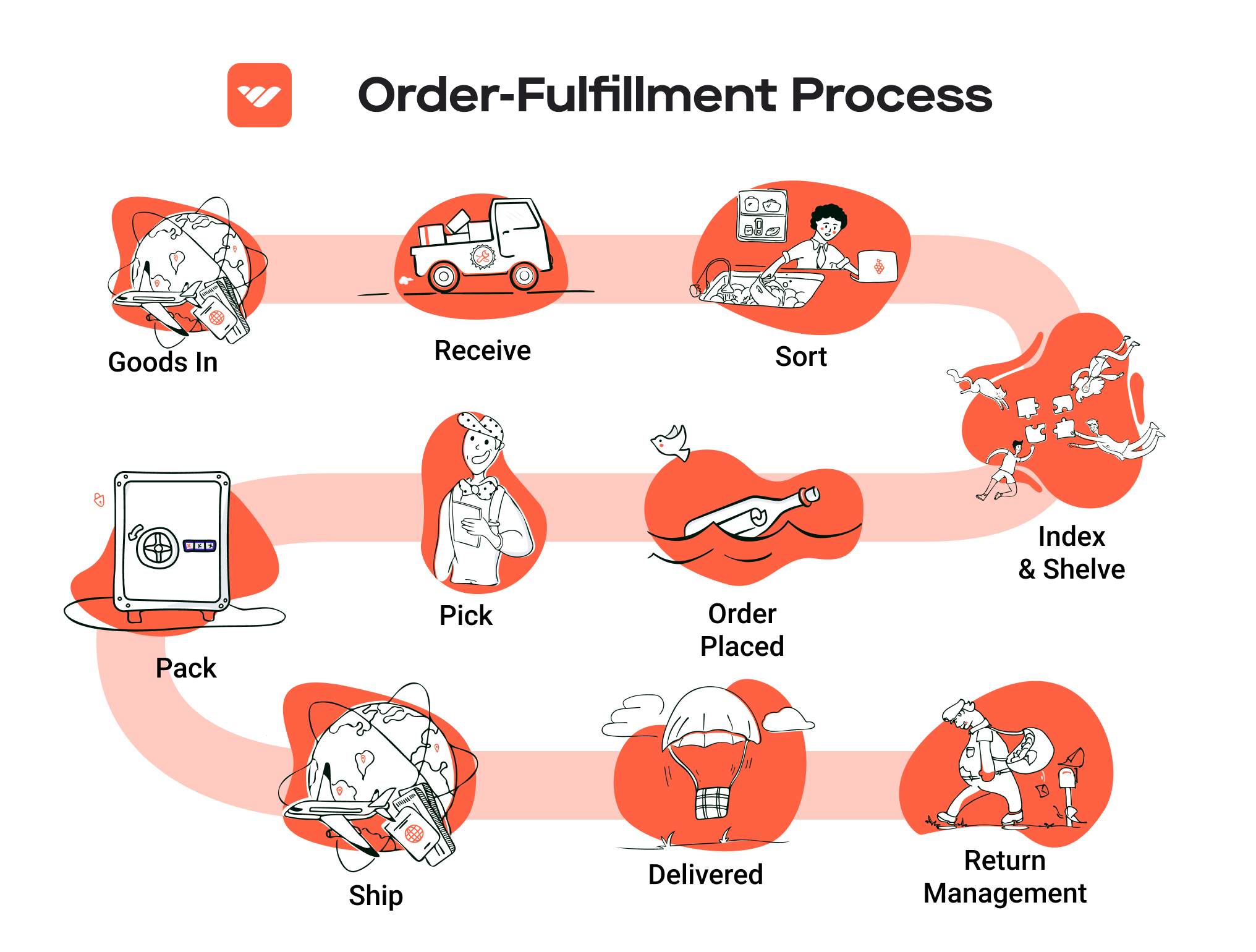
-
Order Fulfillment: When a customer purchases a product, Amazon’s system automatically processes the order, retrieves the item from the storage, packages it, and ships it directly to the customer.
-
Customer Service: Amazon also handles customer inquiries and returns related to FBA orders, ensuring a consistent and professional customer experience.
-
Payment: Sellers receive payment for their sales, minus Amazon’s fees, which vary based on the type of product and the size of the order.
Pros of Using FBA
Prime Eligibility
One of the most significant advantages of using FBA is that products become eligible for Amazon Prime. This means they can be shipped with the fast and free two-day shipping that Prime members expect. Prime eligibility can significantly increase a seller’s visibility and sales, as Prime members tend to prefer items that qualify for this benefit.
Customer Trust
Amazon has built a strong reputation for reliability and customer service. By using FBA, sellers can leverage this trust. Customers are more likely to purchase from sellers who use FBA, knowing they will receive prompt delivery and customer service support. This can lead to higher conversion rates and repeat business.
Multi-Channel Fulfillment
FBA also allows sellers to fulfill orders from multiple sales channels, not just Amazon. This means that if a seller sells on their own website or other platforms, they can still utilize Amazon’s logistics capabilities for those orders. This flexibility can streamline operations and improve overall efficiency.
Scalability
FBA allows businesses to scale without the need to invest heavily in warehousing, logistics, and staffing. As sales increase, sellers can send more inventory to Amazon without worrying about the complexities of order fulfillment.
Cons of Using FBA
High Fees
While FBA offers numerous advantages, it is essential to consider the associated costs. Amazon charges various fees, including storage fees for products stored in their warehouses and fulfillment fees for each order processed. These costs can add up quickly, especially for sellers with low-margin products.
Strict Inventory Rules
Amazon has strict guidelines regarding inventory management. Sellers must adhere to specific packaging and labeling requirements, and failing to do so can result in additional fees or even account suspension. Additionally, sellers need to monitor their inventory levels carefully to avoid excess storage fees or stockouts.
Commingling Risks
FBA products are often commingled, meaning that sellers’ inventory can be mixed with that of other sellers. While this can streamline logistics, it also poses risks. If a customer receives a defective item from another seller, it can impact the original seller’s account health and customer reviews. Some sellers prefer to avoid commingling by opting for stickered inventory, but this can increase costs and complexity.
Limited Control
When using FBA, sellers relinquish some control over the fulfillment process. This includes aspects like packaging, shipping speed, and customer service. For brands that prioritize a specific customer experience, this can be a downside.
Who is FBA Best For?
Fulfillment by Amazon is best suited for:
-
Small to Medium-Sized Businesses: Companies that may not have the resources to manage logistics, warehousing, and customer service can benefit greatly from FBA.
-
High-Volume Sellers: Businesses that expect to sell a high volume of products can capitalize on the efficiencies of Amazon’s fulfillment network.
-
New Sellers: Entrepreneurs entering the e-commerce space can use FBA to quickly gain access to Amazon’s vast customer base without needing to establish their own logistics infrastructure.
-
Brands Looking to Scale: For companies aiming to grow rapidly, FBA provides a scalable solution that can handle increased order volumes without requiring additional investment in infrastructure.
-
Sellers of Low-Margin Products: For products with lower margins, the convenience of FBA can outweigh the costs associated with fees, especially if it leads to increased sales volume.
In summary, while Fulfillment by Amazon presents a compelling opportunity for many e-commerce sellers to enhance their operations, it is crucial to weigh both the advantages and disadvantages to determine if it aligns with their business goals and resources.
Core Services Offered by Fulfillment Centers
Inventory Management & Warehousing
Inventory management and warehousing are foundational services provided by fulfillment centers, crucial for e-commerce businesses aiming to scale efficiently. This service involves the systematic storage of products in a dedicated facility, where inventory levels are monitored and managed using sophisticated software systems.
What It Is: Fulfillment centers utilize advanced inventory management systems to track stock levels, product locations, and reorder points. This ensures that businesses have the right amount of inventory on hand to meet customer demand without overstocking, which can lead to increased holding costs.
Benefits to E-commerce Businesses:
– Optimized Stock Levels: By maintaining accurate inventory records, businesses can avoid stockouts and overstock situations, which can lead to lost sales or increased costs.
– Real-Time Data Access: E-commerce owners gain insights into inventory performance through real-time data, enabling informed decision-making regarding purchasing and sales strategies.
– Cost Efficiency: Proper inventory management reduces storage costs and minimizes waste, contributing to overall profitability.
Pick and Pack Services
Pick and pack services are integral to the order fulfillment process, where individual items are selected from inventory, packed into boxes, and prepared for shipment.
What It Is: In this process, fulfillment center staff or automated systems retrieve items from warehouse shelves based on customer orders. Each order is then packed securely, often with branding elements like custom packaging, and labeled for shipping.
Benefits to E-commerce Businesses:
– Speedy Fulfillment: Efficient pick and pack operations help reduce the time it takes to process orders, which is critical for meeting customer expectations in today’s fast-paced e-commerce environment.
– Accuracy and Quality Control: Fulfillment centers implement checks to ensure that the right items are picked and packed correctly, minimizing errors that can lead to customer dissatisfaction.
– Scalability: As e-commerce businesses grow, fulfillment centers can scale their pick and pack operations to handle increased order volumes without the need for businesses to invest in additional infrastructure.
Kitting and Assembly
Kitting and assembly services are designed to streamline the process of preparing products for sale by combining multiple items into a single package or product.
What It Is: This service involves assembling various components into a final product or creating kits that include multiple items packaged together. For instance, a fulfillment center might assemble a gift set that includes a candle, matches, and a decorative box.
Benefits to E-commerce Businesses:
– Enhanced Product Offering: Kitting allows businesses to create unique product offerings that can attract customers looking for bundled deals, which can enhance sales.
– Time Savings: By outsourcing kitting and assembly to fulfillment centers, e-commerce businesses can save time and focus on core activities such as marketing and customer engagement.
– Improved Customer Experience: Well-assembled kits can improve customer satisfaction through thoughtful presentation and ease of use, leading to positive reviews and repeat purchases.
Returns Management (Reverse Logistics)
Returns management, or reverse logistics, is a critical service offered by fulfillment centers that addresses the complexities of handling product returns.
What It Is: This process encompasses the steps taken to process returned products, including inspection, restocking, and managing defective items. Fulfillment centers often have dedicated teams and systems in place to handle returns efficiently.
Benefits to E-commerce Businesses:
– Streamlined Returns Process: An efficient returns management system minimizes the hassle for customers and ensures a smooth return experience, which is essential for maintaining customer loyalty.
– Data Insights: Returns data provides valuable insights into product performance and customer preferences, enabling businesses to make informed decisions about inventory and product offerings.
– Cost Recovery: By effectively managing returns, businesses can recover value from returned items through refurbishment, resale, or recycling, thus mitigating losses associated with returns.
In conclusion, the core services provided by fulfillment centers, including inventory management, pick and pack, kitting, and returns management, play a vital role in the operational success of e-commerce businesses. By leveraging these services, companies can enhance efficiency, reduce costs, and ultimately improve customer satisfaction, all of which are essential for scaling in today’s competitive online marketplace.
How to Choose a Fulfillment Partner: A 6-Point Checklist
Location & Warehouse Network
Importance:
The geographical location of your fulfillment partner’s warehouses is crucial for optimizing shipping times and costs. A partner with strategically located facilities can minimize transit times, thereby enhancing customer satisfaction through faster deliveries.
Questions to Ask:
– Where are your warehouses located, and how does this align with my customer base?
– What is the average shipping time from your warehouses to key markets?
– Do you have multiple facilities to ensure broader coverage and flexibility?
Technology & Integrations
Importance:
In the fast-paced world of e-commerce, technology plays a pivotal role in streamlining operations. A fulfillment partner with robust technology solutions can provide real-time inventory tracking, order management, and easy integrations with your existing platforms (like Shopify, Amazon, etc.).
Questions to Ask:
– What technology do you use for inventory management and order tracking?
– Can your systems integrate with my e-commerce platform and ERP?
– Do you offer API access for custom integrations?
– How do you ensure data security and compliance with regulations?
Specializations (e.g., Cold Storage, Oversized Items)
Importance:
Not all fulfillment centers are equipped to handle every type of product. If your business deals with specialized items such as perishables or oversized products, it’s essential to partner with a fulfillment provider that has the necessary infrastructure and expertise.
Questions to Ask:
– What types of products do you specialize in handling?
– Do you have specific facilities for cold storage or hazardous materials?
– How do you manage quality control for specialized items?
Scalability & Capacity
Importance:
As your business grows, your fulfillment needs will likely change. A good partner should be able to scale operations seamlessly to accommodate spikes in order volume, whether due to seasonal trends or successful marketing campaigns.
Questions to Ask:
– How do you handle peak seasons or sudden increases in order volume?
– What is your current capacity, and how can it be expanded?
– Are there additional fees or constraints for scaling services?
Pricing and Contracts
Importance:
Understanding the pricing structure and contract terms of a fulfillment partner is vital for maintaining profitability. Transparent pricing helps you avoid unexpected costs and ensures that your budget aligns with your operational needs.
Questions to Ask:
– What is your pricing model (e.g., per order, per item, storage fees)?
– Are there any hidden fees (e.g., for returns, special handling)?
– What are the terms of the contract, and is there flexibility for adjustments?
– Can I scale back services without incurring penalties if needed?
Customer Support & Reviews
Importance:
A fulfillment partner should not only excel in operations but also provide exceptional customer support. The ability to communicate effectively and resolve issues promptly is critical for maintaining smooth operations and customer satisfaction.
Questions to Ask:
– What support channels do you offer (phone, email, chat)?
– How do you handle inquiries and issues outside of regular business hours?
– Can you provide references or case studies from current clients?
– What is your process for addressing fulfillment errors or customer complaints?
Conclusion
Choosing the right fulfillment partner is a pivotal decision that can significantly impact your e-commerce business’s efficiency and customer satisfaction. By using this checklist, you can ensure that your potential partner meets your logistical needs while supporting your business’s growth. Take the time to evaluate each aspect thoroughly, ask the right questions, and engage in discussions that reveal the partner’s capabilities and reliability. This proactive approach will help set your business up for success as you scale your operations.
Understanding Fulfillment Pricing: A Breakdown of Common Fees
Initial Setup Fees
When partnering with a fulfillment center, the first financial consideration is often the initial setup fee. This fee covers the cost of onboarding your products into the fulfillment system. It typically includes the configuration of your account, integration with your e-commerce platform, and the initial setup of inventory management systems.
The calculation of initial setup fees can vary significantly among providers. Some fulfillment centers charge a flat fee, while others may base their pricing on the complexity of your integration or the number of SKUs you have. For instance, if you have a large number of diverse products requiring unique handling instructions, you might incur higher setup costs. Always ask for a detailed breakdown of what is included in this fee to avoid unexpected charges later.
Receiving Fees
Receiving fees are charged each time the fulfillment center takes delivery of your products. This fee compensates for the labor involved in unloading and inspecting shipments, as well as updating inventory records.
Typically, receiving fees are calculated on a per-unit basis or per pallet delivered. For example, if you send 100 units of a product, you may be charged a flat fee for the entire shipment, or it could be calculated based on the number of pallets. Make sure to clarify how these fees are structured, especially if you plan to send large shipments frequently.
Storage Fees (per pallet/bin)
Storage fees apply to the space your inventory occupies in the fulfillment center. These fees are usually calculated on a monthly basis and are based on the volume of space your products occupy, either by pallet or by individual bin.
Most fulfillment centers offer tiered pricing based on the amount of space used. For instance, you might pay a lower rate per pallet if you are storing 10 pallets compared to just one. Additionally, some centers may have seasonal pricing, where costs increase during peak seasons when storage space is in higher demand. Understanding the storage fee structure can help you manage inventory levels effectively and avoid unnecessary costs.
Pick & Pack Fees (per item/order)
Pick and pack fees are incurred every time an order is processed. This fee covers the labor required to pick items from storage, pack them appropriately, and prepare them for shipping.
The calculation of pick and pack fees can vary widely. Some fulfillment centers charge a flat fee per order, while others charge per item within the order. For example, if your order contains five items, you may pay a fee for the order itself and an additional fee for each item picked. It’s crucial to inquire about the specifics of these fees, particularly if you expect to have a high volume of orders with varying item counts.
Shipping Fees
Shipping fees are often one of the most significant costs in fulfillment pricing. These fees are charged for the actual transportation of your products to customers and are influenced by several factors, including the shipping method chosen, the destination, and the weight/dimensions of the package.
Fulfillment centers may offer various shipping options, from standard ground shipping to expedited services, each with different fee structures. Additionally, some providers may have partnerships with carriers that allow them to offer discounted rates. It is beneficial to compare these rates against your own shipping arrangements to ensure you are getting the best possible deal.
Tips for Getting an Accurate Quote
-
Request Detailed Pricing Information: When seeking quotes, ask for a comprehensive breakdown of all potential fees. This includes setup, receiving, storage, pick & pack, and shipping fees.
-
Understand Your Needs: Clearly outline your business model, expected order volumes, and inventory turnover rates. This information can help fulfillment centers provide more tailored pricing.
-
Consider Seasonal Fluctuations: If your business experiences seasonal peaks, inquire about how fulfillment centers handle increased volume and whether they have flexible pricing to accommodate these changes.
-
Look for Hidden Fees: Always clarify if there are any additional fees that may not be immediately apparent, such as returns processing or packaging supplies.
-
Negotiate Terms: Don’t hesitate to negotiate pricing or ask for discounts based on expected order volume or length of contract. Many fulfillment centers are open to adjusting fees to secure long-term partnerships.
By thoroughly understanding the components of fulfillment pricing and carefully evaluating quotes from multiple providers, you can make informed decisions that align with your business’s growth objectives.
Frequently Asked Questions (FAQs) about Fulfillment
1. What is the Amazon LAS-7 Fulfillment Center?
The Amazon LAS-7 Fulfillment Center, located in Las Vegas, NV, is a large-scale warehouse facility designed to store, pack, and ship a diverse range of products for Amazon. This center plays a crucial role in the e-commerce giant’s logistics network, ensuring timely delivery of orders to customers throughout the region.
2. How does the LAS-7 Fulfillment Center improve delivery times?
The LAS-7 facility enhances delivery speeds through its strategic location, advanced technology, and efficient operational processes. By streamlining the fulfillment workflow—such as order picking, packing, and shipping—the center can quickly process large volumes of orders, allowing Amazon to meet its commitment to fast delivery services.
3. What types of products are handled at the LAS-7 Fulfillment Center?
The LAS-7 center is equipped to handle a wide array of products, ranging from electronics and household items to clothing and toys. Its flexible infrastructure allows it to adapt to various product categories, which helps accommodate the diverse needs of Amazon’s customer base.
4. What is the difference between a warehouse and a fulfillment center?
A warehouse primarily focuses on storing goods, while a fulfillment center specializes in processing and shipping orders directly to customers. Fulfillment centers typically offer additional services such as inventory management, order picking, packing, and shipping, making them integral to e-commerce operations.
5. What is a 3PL (Third-Party Logistics)?
A 3PL, or third-party logistics provider, is a company that manages logistics operations for other businesses. This can include warehousing, transportation, and fulfillment services. Utilizing a 3PL allows businesses to scale their operations without investing heavily in infrastructure and logistics capabilities.
6. How much do fulfillment services cost?
The cost of fulfillment services varies based on factors such as order volume, storage space, and specific services required (like packaging or shipping). On average, businesses can expect to pay for storage fees, order processing fees, and shipping costs. It’s advisable to compare different providers to find the best pricing structure that aligns with your business needs.
7. Can I visit the LAS-7 Fulfillment Center?
Yes, the LAS-7 Fulfillment Center offers tours that provide visitors with a behind-the-scenes look at its operations. These tours typically showcase the fulfillment process, from order placement to shipping. However, it’s essential to check for availability and any specific requirements before planning a visit.
8. What technology is used at the LAS-7 Fulfillment Center?
The LAS-7 facility employs advanced technologies such as automated picking systems, robotics, and sophisticated inventory management software. These technologies help streamline operations, reduce errors, and enhance overall efficiency in processing orders.
9. How does Amazon ensure product safety at the LAS-7 Fulfillment Center?
Amazon implements rigorous safety protocols at the LAS-7 Fulfillment Center, including regular inspections, employee training programs, and strict compliance with safety regulations. Additionally, the facility is designed with safety features to minimize risks and protect both products and personnel.
10. What are the benefits of using the LAS-7 Fulfillment Center for my e-commerce business?
Utilizing the LAS-7 Fulfillment Center can provide numerous advantages for e-commerce businesses, including faster shipping times, reduced operational costs, and access to Amazon’s vast logistics network. This can enhance customer satisfaction and ultimately lead to increased sales and growth opportunities for your business.
Conclusion: Is Outsourcing Fulfillment the Right Move for Your Business?
Evaluating the Benefits of Outsourcing Fulfillment
Outsourcing your fulfillment process can be a transformative decision for your e-commerce business. One of the most compelling benefits is the time savings it offers. By entrusting your order processing, packing, and shipping to a dedicated fulfillment partner, you can redirect your focus towards strategic growth initiatives, customer engagement, and product development. This shift in focus is critical in a fast-paced e-commerce landscape, where agility and responsiveness are essential.
Scalability is another significant advantage of utilizing a fulfillment service. As your business grows, so do your logistics needs. A proficient fulfillment partner can seamlessly scale operations to accommodate fluctuating order volumes, seasonal spikes, and new product launches. This flexibility enables you to meet customer demands without the burden of investing in additional infrastructure or workforce.
Moreover, partnering with a fulfillment center brings expertise that can enhance your operational efficiency. Fulfillment providers are seasoned in best practices, technology integration, and inventory management. Their established systems can reduce errors, improve delivery times, and enhance the overall customer experience, which is vital for maintaining a competitive edge.
However, the success of this strategy hinges on selecting the right fulfillment partner. Conduct thorough research to ensure they align with your business goals, understand your market, and possess the necessary infrastructure to support your growth.
Take Action Now
To determine if outsourcing fulfillment is the right move for your business, start by auditing your current shipping process. Identify bottlenecks, assess your capacity for growth, and evaluate your operational efficiency. This analysis will provide valuable insights into whether a fulfillment partner could enhance your logistics strategy and drive your business forward. Taking this step could be pivotal in unlocking your business’s full potential.
Important Disclaimer
⚠️ Important Disclaimer
The information in this guide is for educational purposes. Fulfillment services, pricing, and platform features change frequently. Always conduct your own due diligence and consult with providers directly before making business decisions.
